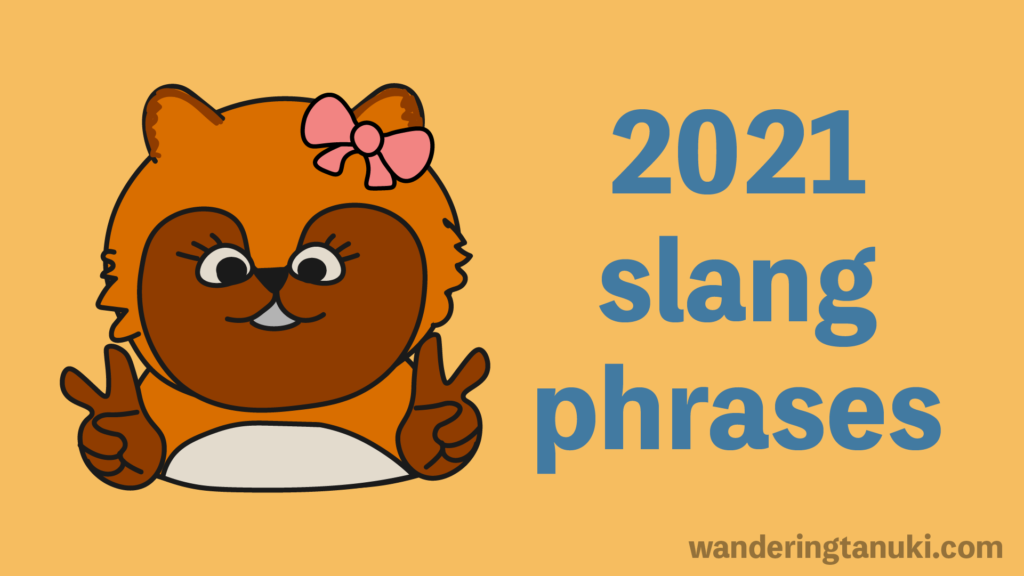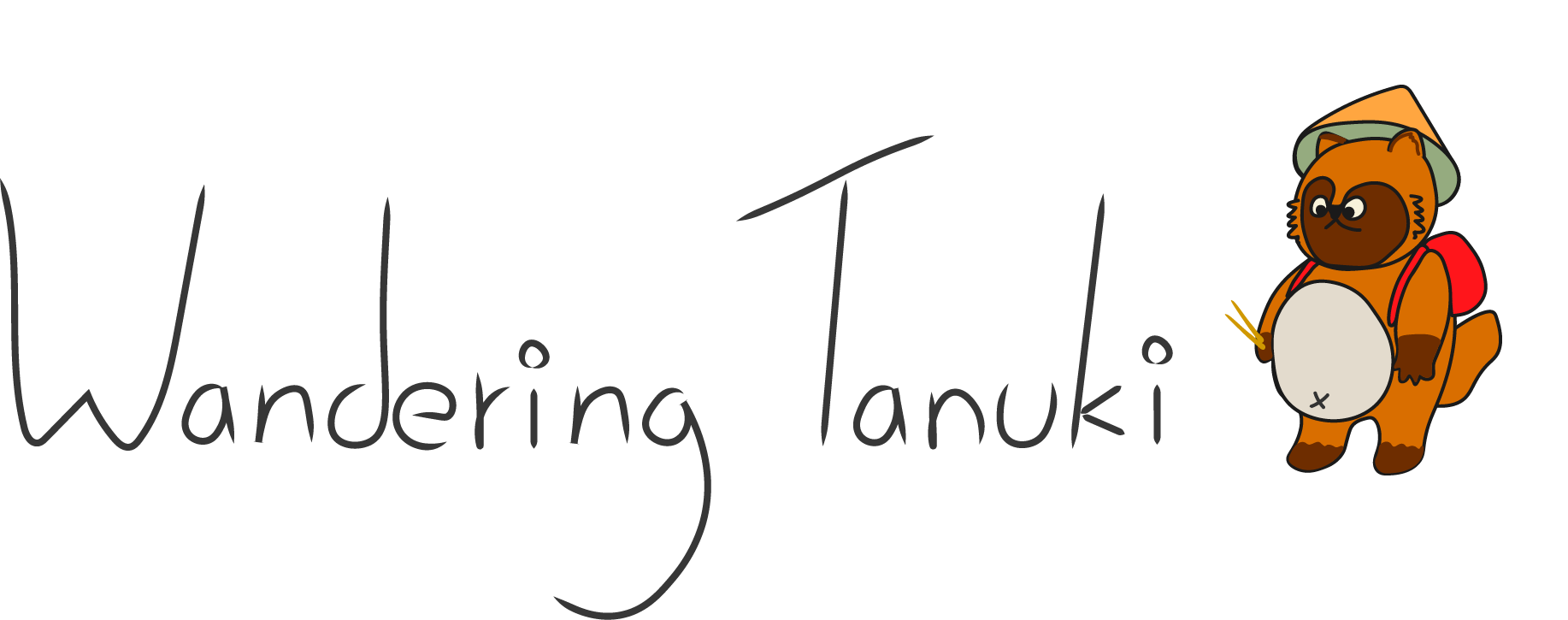10 Japanese Trending Slang Phrases of 2021
Have you ever wondered what kinds of Japanese slang phrases young people are using these days? Here are 10 phrases that are trending in 2021! Note that these phrases come and go, so they could fall out of style quickly. If no one around you is using it, it’s better not to use them. In Japan, if you use weirdly young slang that doesn’t match your age it could be strange.

1. やりらふぃー (yarirafii)
Definition: Someone who is high energy and likes to party.
How to use:
彼、やりらふぃーだね。
Kare yarirafii da ne.
He’s a party person.
Why it’s trending:
A tiktok video from 2020 shows people dancing to the song Chernobyl 2017, a Norwegian song. For some reason, one of the lines “Jeg vil at vi” stuck with young Japanese people who thought it sounded like やりらふぃー (yarirafii). It now refers to people who like parties or people who dance to this song. You can see some of the trending videos here:
2. はにゃ?(Hanya?)
Definition: A way to say “What?” or “Oh?” in a cute way.
How to use:
はにゃ?どこに行ったんだろう。
Hanya? Doko ni ittandarou.
Oh? I wonder where it went.
Why it’s trending:
This trendy Japanese slang phrase comes from comedian Rei Maruyama. She began saying “hanya?”, as a cute way to express surprise. It began trending in 2020, but the phrase is still going strong. You can check out her youtube channel here.
3. スパダリ(Supadari)
Definition: Describes a guy who is tall, well educated, high earning, with good looks. It’s a shortened form of “Super Darling”.
How to use:
背も高いし、スパダリ感がすごい。
Se mo takai shi, supadarikan ga sugoi.
That guy is tall and has a lot of “supadari” vibes.
Why it’s trending:
This slang phrase has been around for a long time among the otaku community. However, it started to appeal to mainstream people when it was featured as the next trendy phrase on a Japanese T.V. show in October, 2020. Since then, it’s been popular among young women who want to describe good looking, attractive, and successful men.
4. 好きピ (Sukipi)
Definition: This phrase means people you like as friends. It comes from a shortened version of 好きなピープル (sukina peepuru).
How to use:
好きピとディズニーに行ってきた。
Sukipi to dizunii ni itte kita.
I went to Disneyland with people I like.
Why it’s trending:
This phrase has been trendy slang for several years now. Japanese people have started using the word “people” in English and shortening it to ピ (pi). You’ll find other words that end in ピ(pi) that refer to “people”.
5. リムる (Rimuru)
Definition: To remove or unfollow. Refers to when you unfollow someone from social media.
How to use:
つまらないからリムる。
Tsumaranai kara rimuru.
It’s boring so I’m gonna unfollow.
Why it’s trending:
With so many people in Japan using social media, Japanese people have also developed their own social media slang. This word can be used to show the following and unfollowing drama that sometimes happens online.
6. ぴえん (Pien)
Definition: Means “waahh…” or “crying”. It could be used in place of a sad face emoji.
How to use:
パーティーに行けない。ぴえん
Paatii ni ikenai. Pien
I can’t go to the party. T-T
Why it’s trending:
In 2019, ぴえん (pien) was one of the top trending words for high school and middle schoolers. Since then, it has gotten more popular and you’ll see people use this especially in text based communication. The word comes from the combination of two Japanese onomatopoeia words for crying, ぴいぴい (piipii) and えーん (een).
7. メンヘラ (Menhera)
Definition: Comes from “mental health”, but means someone who seems to be having mental health problems.
How to use:
あの人メンヘラだと思う。
Ano hito menhera dato omou.
I think that person has mental health problems.
Why it’s trending: Menhera has been around for awhile now, but it was still ranked high as a trendy phrase by high schoolers. This is a phrase that has also started to refer to a kind of emo or goth fashion style.
8. してもろて (Shitemorote)
Definition: Means “please”, more specifically it’s used in place of してください (Shitekudasai).
How to use:
フォローしてもろて。
Foroo shitemorote.
Follow me, please.
Why it’s trending:
Shitemorote has always been used in the Kansai dialect, but it started trending among young people through games like PUBG, Vtubers, and YouTube. In the Kansai dialect it is just an alternate way of saying してもらって (Shitemoratte). However, young people are using it as a way to say “please”. After the ending して (shite), you could add もろて. The reason it’s popular is because people think that it adds a soft nuance to “please”.
9. 勝たんしか ____ 。 (katanshika ____. )
Definition: Means “ ____ is the best”. You can put whatever you want in the blank that you like. Young people tend to use it for idols they like.
How to use:
勝たんしか醤油ラーメン。
Katanshika shouyu raamen.
Soy sauce ramen is the best.
Why it’s trending:
For the past couple years, ___しか勝たん (_______shika katan) was trending among teens and those in their early 20’s. More recently, the word order started getting reversed so that people put their favorite or thing they love at the end and the phrase turned to 勝たんしか___。(katanshika_______).
10. すいやせぇん (Suiyaseen)
Definition: Alternate way of saying “sorry” or すみません (sumimasen).
How to use:
遅れてすいやせぇん!
Okurete suiyaseen!
Sorry I’m late!
Why it’s trending:
This Japanese slang phrase can appear in multiple ways as it’s more of a style of saying すみません (sumimasen) where you elongate the end. It’s more for spoken language and doesn’t appear as much in writing. It was started as a trend by a youtuber that’s popular among young people. Her name is Aya Nakamachi, and this suiyaseen has been ranked as one of the phrases that will trend this year. You can see a compilation of her suiyaseen in this video:
I hope this article on Japanese slang phrases of 2021 can help you look deeper into current Japanese culture! If you’d like more Japanese language learning blog content be sure to check out my articles like Wasei-eigo!: 25 Fake English words in Japanese or 20 Japanese Tongue Twisters: Hayakuchi kotoba .
~ Tanuki
Sources used in article:
https://news.yahoo.co.jp/articles/494c4bc5bc96b5c6ad6ff05604fb176fbcedceeb
https://kotowaka.com/young/shitemorote/
https://numan.tokyo/column/pmpjF





